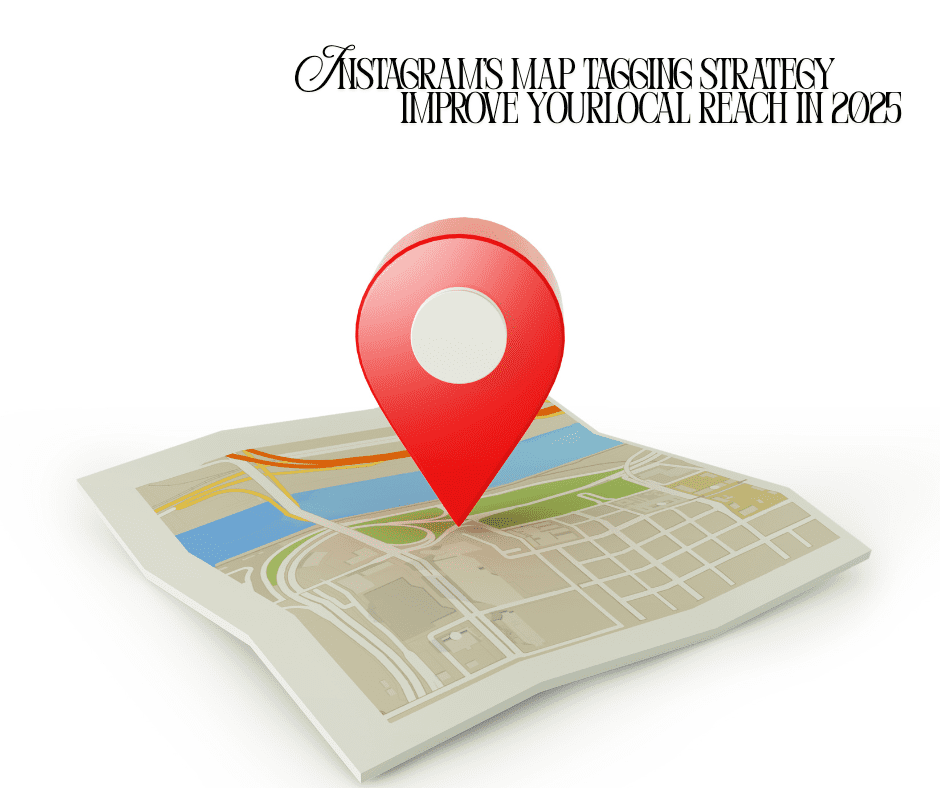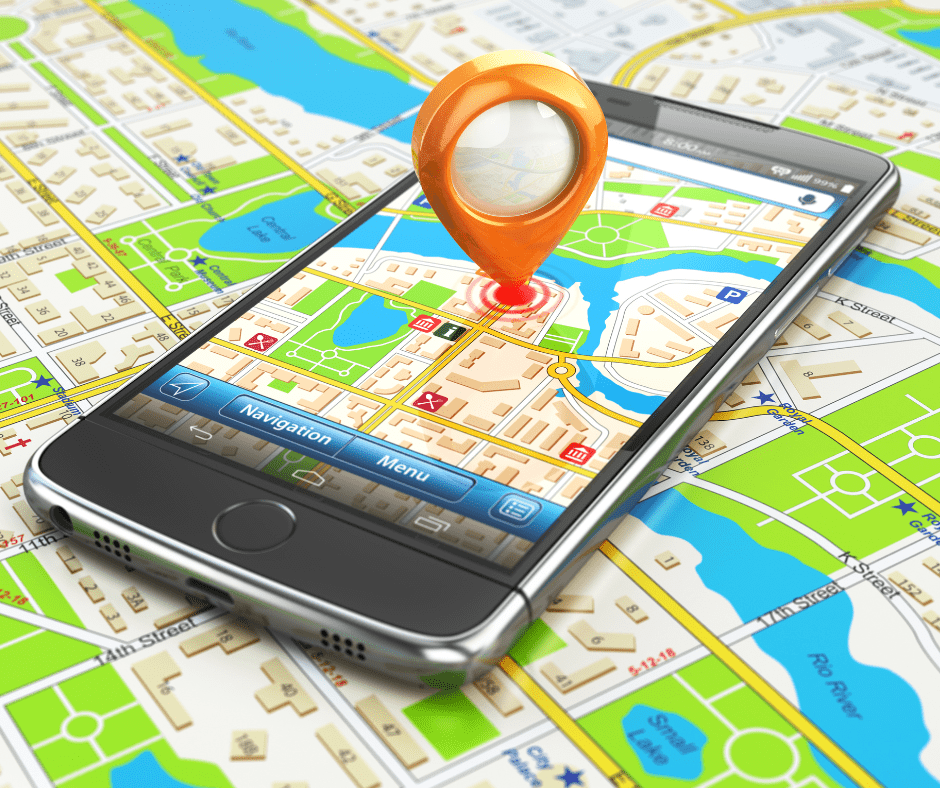Last Updated on August 26, 2025 by Val Razo
In a competitive digital world, local SEO and visibility on social platforms have never been more critical. With over a billion monthly active users, Instagram remains a powerhouse for brands aiming to boost local reach. One of Instagram’s latest updates—the enhanced map tagging strategy—is changing the way local businesses appear in search results and how users discover new places in their city or neighborhood. By learning to properly use Instagram’s map tagging feature, brands can significantly boost their visibility, drive foot traffic, and attract Instagram followers organically.
Whether you’re a small business owner, a social media manager, or just looking to strengthen your presence on Instagram, mastering how to optimize your business location tags can elevate your local reach. In this guide, we’ll explore best practices, tools, and actionable strategies to help you show up in the right places—literally—on Instagram in 2025.
Why Instagram’s Map Tagging Feature Matters in 2025
Key Instagram Features That Influence Local SEO
In 2025, Instagram continues to evolve as a discovery engine—not just for people and brands, but for local businesses as well. One of the platform’s most impactful additions has been the enhancement of its map tagging capabilities. By integrating location tags directly into the Instagram app, users can now explore an interactive map, discovering business locations in their area with just a few taps.
Features like tag your location, Instagram stories, and posts and reels now feed directly into this dynamic map view. This means that when a user is looking to discover new cafes, boutiques, gyms, or services in a particular city or neighborhood, tagged posts are more likely to surface in their search results or explore page.
For local SEO, this is a game-changer. Tagging your business profile with an accurate location helps place your content where it’s most relevant—literally. This increased precision boosts your visibility in local search results, drives organic reach, and encourages more in-person visits, thereby increasing foot traffic.
How Instagram’s Algorithm Prioritizes Location Data
Understanding how the Instagram algorithm works in 2025 is key to mastering local reach. Instagram is prioritizing location-specific content more than ever. It assesses location tags, captions, hashtags, and even visual elements in Instagram posts to determine relevance in localized searches.
The algorithm favors content that aligns with users’ intent to discover, especially when they open the app and search for something in their area. Posts that include properly tagged business locations, meaningful keywords, and optimized Instagram content are more likely to appear on the explore page or in suggested search queries tied to a geographic region.
To fully leverage Instagram for local SEO, your strategy must include not just tagging locations but optimizing every element—from your Instagram bio and reels to your best time to post and use of Instagram insights. These all contribute to the algorithm’s evaluation and directly impact whether your content is seen by the right audience.
The integration of map tagging into the Instagram feed, stories, and business profiles marks a shift toward location-first content discovery. Businesses that understand and adapt to this shift will significantly boost their visibility and reach a wider audience in their community.
How to Use Instagram Location Tags to Boost Local Reach
Difference Between Location Tags and Geotags
Many users confuse location tags with traditional geotags, but understanding the distinction is crucial for any local business trying to increase its presence on Instagram. A location tag is a clickable place identifier that appears on Instagram posts, stories, or reels and is linked to a precise business location or area (like a city or neighborhood). It allows users to explore all public posts tagged in that spot, giving your content added exposure.
In contrast, geotags used to be metadata embedded in photos, offering limited discovery options. Today, Instagram’s latest updates prioritize location tags because they feed directly into the platform’s map view and search results. This small difference can dramatically affect how your posts are indexed by the Instagram algorithm and how easily users can find you.
A Chicago-based coffee shop increased its in-store visits by 28% by consistently adding a location tag and encouraging customers to tag your business in their stories.
Step-by-Step: Tagging a Business Location Properly
To boost your visibility and increase organic reach, it’s essential to add your location correctly. Here’s how to do it:
-
Open Instagram and create a post or story.
-
Tap “Add Location” and begin typing your business profile or location name.
-
Choose the exact match from the dropdown (avoid spelling variations).
-
Make sure it reflects your correct city or neighborhood.
-
Use the same location tag consistently across your Instagram content—this helps build your relevance for that area in the algorithm.
Using tools like Instagram insights or third-party social media management platforms can help track which location tags perform best. Over time, this strategy allows you to target and dominate specific local search results.
Boosting Your Visibility on the Explore Page
The explore page is where most users go to discover the latest Instagram content—and it’s heavily influenced by location tags, content engagement, and post relevance. Using hashtags alone is no longer enough to boost local reach. You need to combine them with smart location tagging, high-quality visuals, and meaningful captions that include keywords relevant to your niche or industry.
To improve your chances of appearing here:
-
Post consistently during your best times to post on Instagram
-
Combine Instagram reels, posts, and stories for variety
-
Always tag your business location
-
Encourage users to tag your business when they post from your venue
-
Work with a local influencer who can help amplify your Instagram marketing
Done right, this strategy not only increases your visibility but can also drive more foot traffic, followers, and even revenue through smart, localized content.
A local bakery in London collaborated with micro-influencers to boost tagged posts and drive discovery via the explore page.
Best Practices to Optimize Your Map Tagging Strategy
Using Instagram for Local Business Growth
For any local business, learning how to use Instagram beyond just posting pretty photos is essential. With the Instagram map tagging system now deeply tied to local discovery, it’s more important than ever to turn your Instagram account into a local SEO machine.
That starts by optimizing your business profile with a complete address, choosing the right category, and ensuring consistency across your social media presence. Then, every piece of content—whether it’s a reel, story, or post on Instagram—should include a relevant location tag.
When used correctly, these tags do more than mark a spot—they drive local search results, increase foot traffic, and help nearby users discover new services right in their area. Combined with Instagram marketing techniques like curated hashtags, follower interaction, and strategic content types, map tagging becomes a powerful tool to grow organically.
Optimize Content to Align with Instagram’s 2025 Algorithm
The Instagram algorithm in 2025 is more sophisticated than ever. It analyzes every part of your content—from captions and hashtags to type of content, location data, and even how users engage with your posts and reels.
Here’s how to optimize accordingly:
-
Use the location tag in every post when applicable
-
Mention the city or neighborhood in your caption and hashtags
-
Align your Instagram bio and content with local keywords
-
Stay up to date on Instagram updates that impact the feed
-
Post high-engagement content (like Instagram reels) during your best time to post
By giving the algorithm the right signals, you’ll increase your chances of showing up in the explore page, local maps, and search results.
Tag Smarter: Avoid Overuse and Misuse
While location tagging is powerful, using it improperly can reduce its impact or even get your content flagged. Avoid these common mistakes:
-
Repeatedly tagging popular locations that aren’t relevant to your business
-
Using the wrong or outdated business location
-
Spamming location tags in stories without meaningful content
-
Ignoring the actual location in posts when scheduling content via tools
Instead, follow Instagram best practices:
-
Always tag your actual business location
-
Avoid duplicate or similar tags (e.g., “Downtown Coffee Shop” vs “Coffee Shop Downtown”)
-
Cross-check your tag’s accuracy via the Instagram app
-
Use high-quality images and create content that reflects the local area
The goal is to make your content relevant, trustworthy, and genuinely useful for users exploring the map or searching locally.
When I started using Instagram’s location tags consistently for my boutique in Portland, I noticed a huge uptick in both foot traffic and DMs asking for in-store availability. By optimizing my Instagram bio and tagging my business correctly, I started appearing in the explore page for nearby users. Within 3 months, our Instagram followers grew by 40%, and we saw a 25% increase in in-store sales. All from being more intentional about location tagging!
Leveraging Instagram Marketing for Local SEO Success
How to Boost Local Reach With Targeted Content
To truly boost local reach on Instagram, your content must be hyper-relevant to your local audience. That means posting about real events, tagging the business location, and creating a sense of community around your brand.
Some proven tactics include:
-
Featuring local events or partnerships in your Instagram stories
-
Highlighting your neighborhood in Instagram reels
-
Encouraging user-generated content with a branded location tag
-
Hosting contests that require users to tag your business
These methods increase engagement, improve your visibility in search results, and signal to the Instagram algorithm that your content is location-specific. By focusing your Insta marketing on relevance, you’ll naturally drive more foot traffic and reach on Instagram.
Cross-Promoting on Social Media Platforms
Instagram doesn’t exist in a vacuum. To maximize visibility, pair your map tagging strategy with a broader social media marketing plan. Share your Instagram posts on platforms like Facebook, Threads, TikTok, or even LinkedIn—especially if you serve a niche or professional market.
Cross-promotion helps:
-
Reinforce your business location and Instagram presence across platforms
-
Reach potential customers not actively browsing Instagram
-
Increase tagged posts and visibility through diverse channels
-
Support your overall social media goals with consistent messaging
Don’t forget to use location-based hashtags and keywords that connect your brand to a specific area, such as “#NYCBakery” or “#AustinFitnessStudio.”
Social Media Management Tools to Enhance Performance
Managing all of this manually can be overwhelming. That’s where social media management tools come in. Platforms like Later, Buffer, or Hootsuite allow you to:
-
Schedule content at the best time to post
-
Track your Instagram insights and reach on Instagram
-
Analyze top-performing hashtags and location tags
-
Maintain a consistent brand presence across all channels
For social media managers, these tools are essential to streamline workflow and optimize efforts, ensuring every post on Instagram aligns with your SEO strategy and drives measurable results.
Measuring Success: How to Track and Improve Reach on Instagram
Instagram Insights: What Metrics to Watch
To know whether your Instagram map tagging strategy is working, dive into your Instagram insights. This built-in analytics tool provides vital data about who’s viewing and engaging with your Instagram posts, reels, and stories.
Key metrics to monitor:
-
Reach and impressions from location tags
-
Engagement on tagged posts vs. non-tagged content
-
Top-performing hashtags and types of content
-
Audience demographics and geographic distribution
-
Tap-throughs to your business profile or website
Tracking these metrics regularly helps you understand how your strategy affects local SEO, organic reach, and foot traffic to your local business.
Foxtrot, a Chicago-based café and market, used hyper-local Instagram marketing and map tagging to fuel rapid in-city growth. By tagging each new location, creating Instagram reels with local influencers, and encouraging customers to tag your business, Foxtrot saw a 60% jump in local engagement and an 18% increase in sales near tagged posts.
Refining Your Strategy Based on Follower Behavior
Successful Insta marketing is all about adaptation. Use behavior data to refine your approach:
-
If reels perform better than posts, make them your primary content type.
-
If a certain location tag generates higher engagement, use it more consistently.
-
Monitor when your audience is most active and adjust your posting times.
-
Use captions and keywords that resonate with your local audience.
This iterative process ensures you’re not just posting—but posting with purpose, aligned with the Instagram algorithm and your social media goals.
88% of consumers who do a local search on their smartphone visit or call a store within a day.
Conclusion
As Instagram continues to innovate in 2025, its map tagging feature has emerged as a powerful tool for local businesses aiming to increase visibility, drive engagement, and attract real-world customers. By strategically adding your location, following best practices, and aligning with the evolving IG algorithm, businesses can significantly improve their local SEO and stand out in search results.
Whether you’re just learning how to use Instagram for marketing or looking to sharpen your existing strategy, focusing on location tags, timely posts and reels, and accurate business profile details will help you consistently boost local reach. Combine these efforts with smart content planning and data tracking, and you’ll be well-positioned to thrive on Instagram and beyond.
Frequently Asked Questions
What does a guide to Instagram SEO include in 2025?
A solid guide to Instagram SEO in 2025 focuses on optimizing your Instagram bio, using relevant keywords, applying adding location tags, and aligning your content with the Instagram algorithm. It also includes analyzing the number of posts, audience behavior, and using insights to refine your strategy.
What does Instagram mean for small business growth today?
Instagram means opportunity—especially for local businesses. With advanced features like map tagging, stories, reels, and tagged content, Instagram is currently one of the best platforms for organic reach, brand visibility, and meaningful customer interaction.
What’s the difference between tagging your business and a general location on Instagram?
Tagging your business location specifically tells the Insta algorithm that your content is tied to a verified place, which helps boost your posts in local search results. Generic tags like a city or shopping area may increase reach, but lack the precision needed to attract local customers effectively.
How do location tags influence Instagram’s explore and map features in 2025?
In 2025, adding location tags directly influences how content shows up on Instagram’s map and explore page. Posts with specific location data are prioritized in Instagram to discover new experiences, giving Instagram users more relevant results—and giving businesses higher visibility within a specific city or neighborhood.
What role do social media teams play in scaling Instagram growth through tagging?
A skilled social media team can turn simple tags into a strategic growth engine. By coordinating posts and stories, using the right location tags, and tracking engagement through tools like Instagram Insights, they help achieve consistent Instagram growth and align results with broader social media goals.
Author Bio
Val Razo
Val Razo is a skilled professional in the field of Instagram Marketing. With over five years of experience as a freelance Social Media Marketing consultant, Val has assisted numerous small and medium-sized businesses in achieving their goals.





